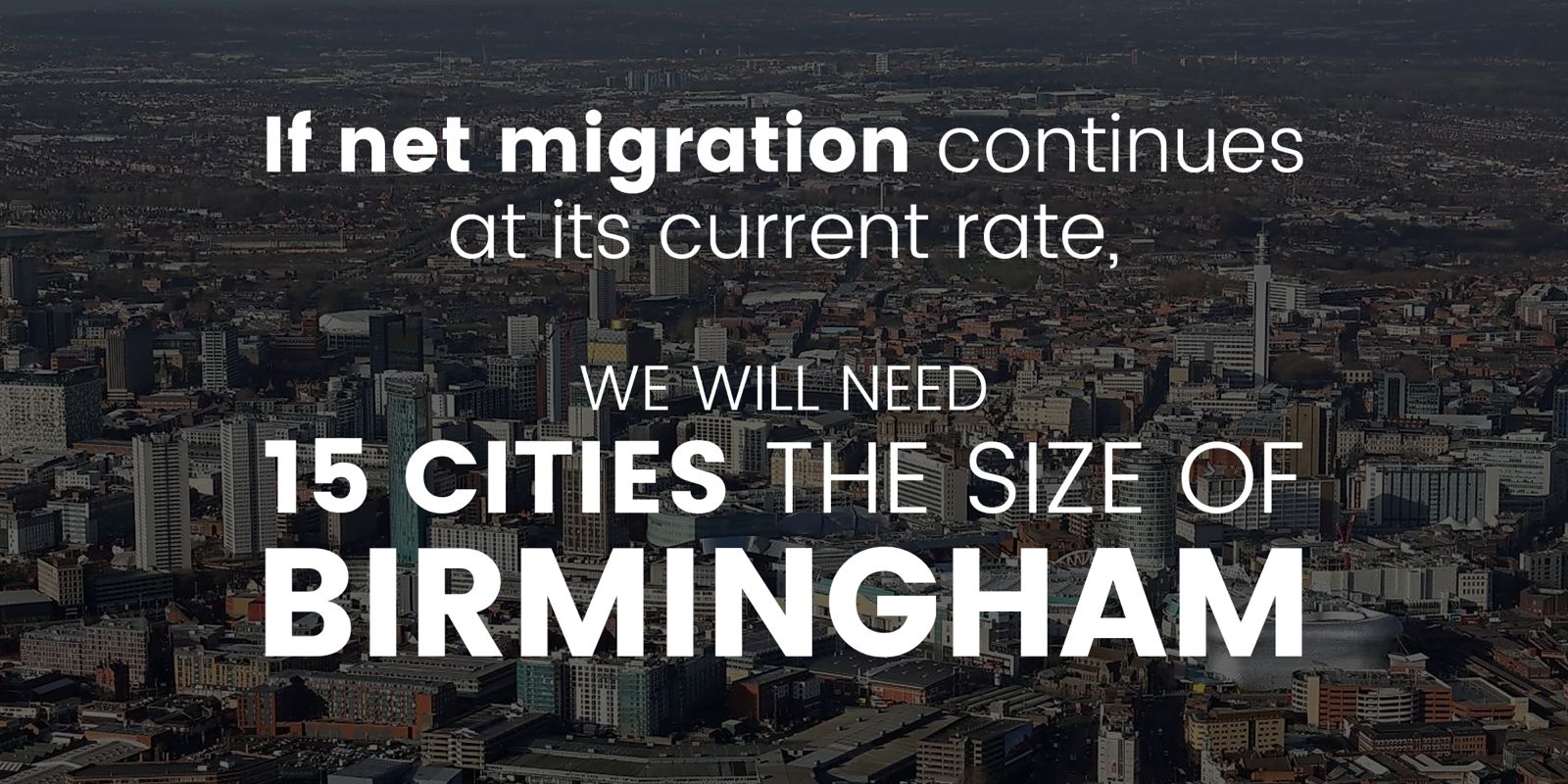
This is a preview of Migration Watch’s free weekly newsletter. You can read the full version here.
Please consider signing up to the newsletter directly, you can do so here and will receive an email copy of the newsletter every Friday as soon as it is released.
| In a new paper published this week, Migration Watch considered what it would mean for infrastructure and other essential needs should net migration continue at 600,000 per year. Migration at such a rate will result in population growth of more than 15 million people by 2046, requiring six and half million more homes. 15 million people is about 15 cities the size of Birmingham. The paper considered the additional infrastructure that will be required. Here are some illustrative (actually, eye-popping) figures:6,675 schools2,640 GP Surgeries7,785 roads135 hospitals75 police stations75 universitiesThe toll on communities and the countryside will be immense, with millions of acres concreted over. You can read the full paper here. In other news this week, it seems that ahead of the Supreme Court’s Rwanda decision (we learned yesterday that it is going to be next week), a succession of European countries, including Italy, Austria and Germany are establishing or looking to set up their own versions of the UK’s Rwanda arrangement. So far, Italy, Austria and Germany have all announced that they are proceeding with, or considering, similar schemes. Italy has mirrored the UK’s arrangements, only with Albania. While Austria has signed a cooperation agreement with the UK to move processing to Rwanda. And Germany, of all countries, has said it will consider overseas asylum processing. One other bit of news this week was that the government is adding India to the ‘safe country list’. While this should make it easier to return illegal migrants, we mustn’t forget that both are notoriously slow to accept and document their nationals. We are not convinced that adding these countries to the safe country list will make a great deal of difference. |
This is a preview of Migration Watch’s free weekly newsletter. You can read the full version here.
Please consider signing up to the newsletter directly, you can do so here and will receive an email copy of the newsletter every Friday as soon as it is released.
